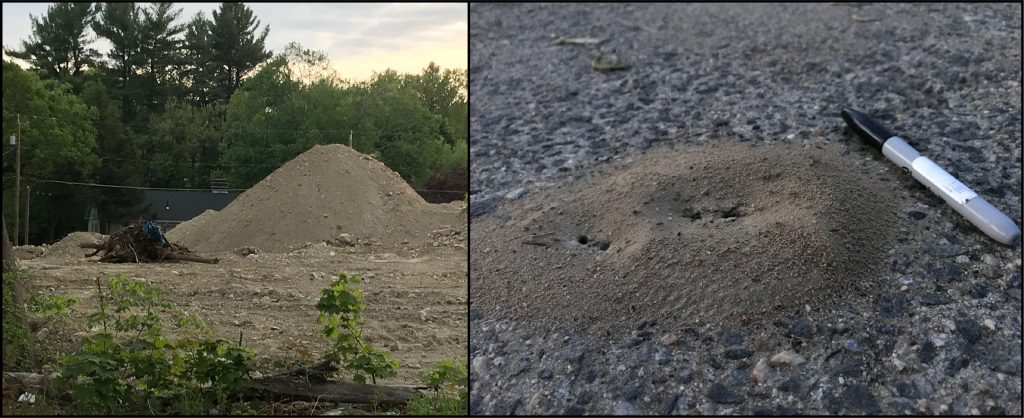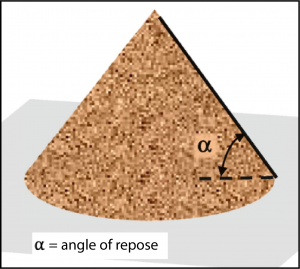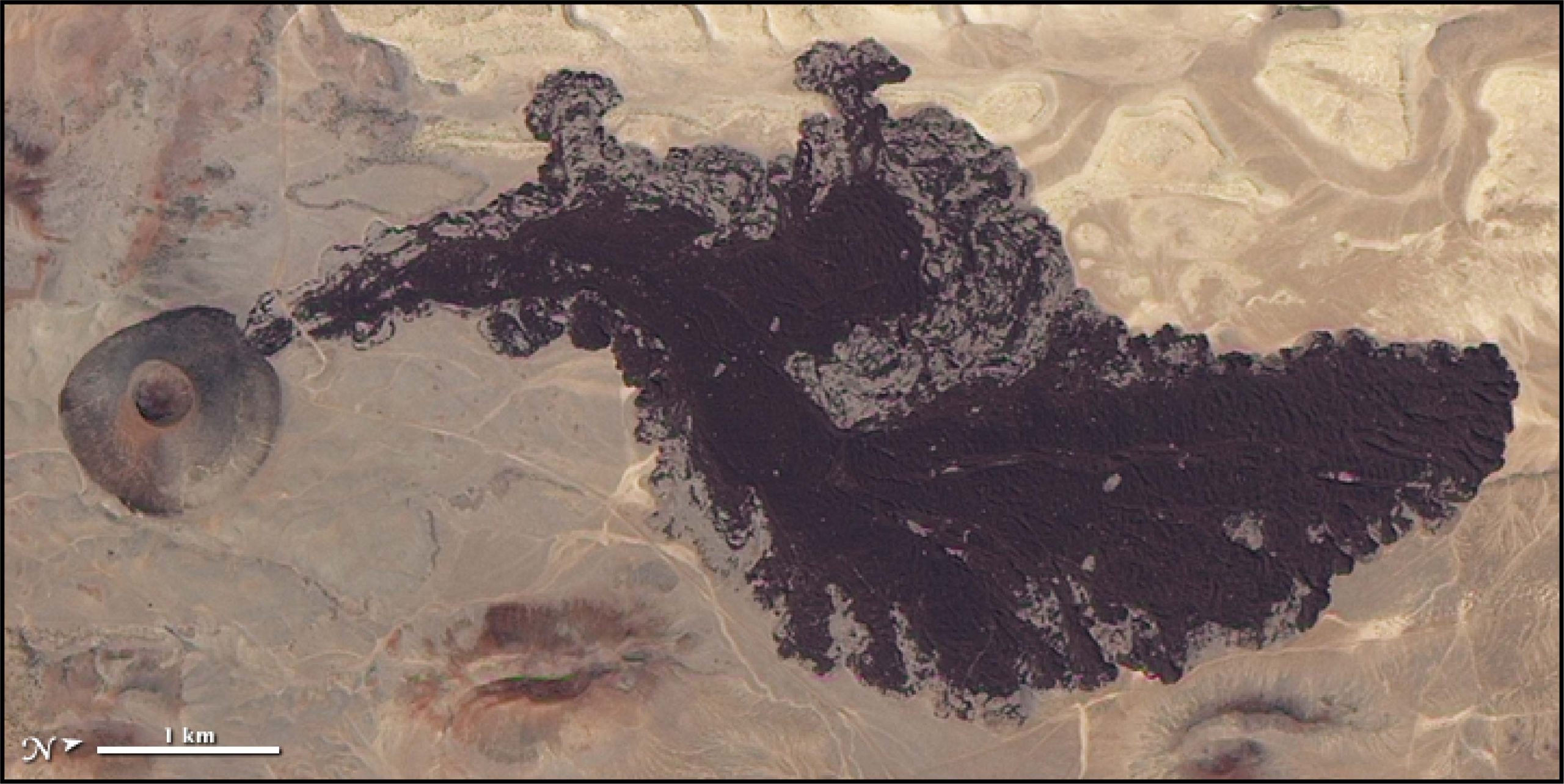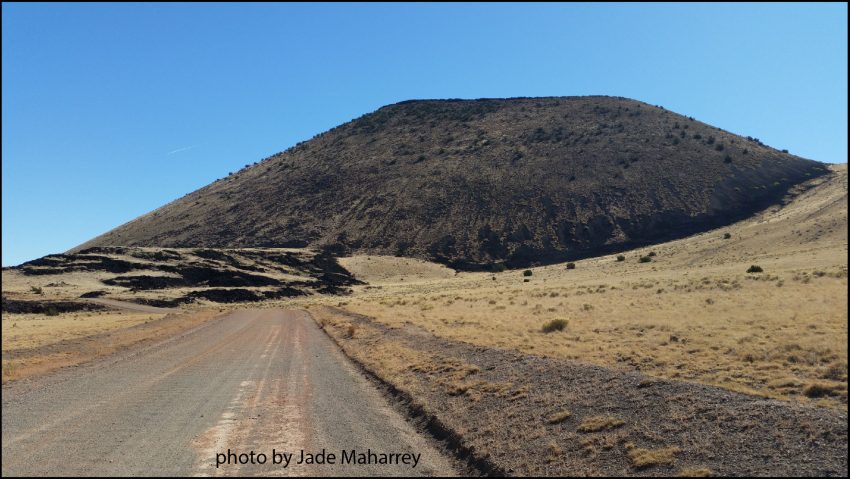Picture this: you’re a young kid at the beach or lake or even just sitting in a sandbox. You’ve already been in and out of the water swimming a million times or you’re bored with just throwing mud pies at your siblings. So, you decide to take your tiny shovel and build the largest pile of sand you can with steep slides. However, it seems to be taking forever to get your pile of sand tall enough to impress your friends! No matter how much sand you pile on top, the sand grains tumble down the slopes of the pile. In fact, the overall shape of your pile doesn’t seem to be changing, even if you add more and more sand. Little did you know as a kid but you were experimenting along the boundaries of engineering, physics, and geology with what we call the angle of repose.

What is the angle of repose?
The angle of repose is the steepest angle that you can pile material like sand without the pile slumping1. It can also be thought of as the steepest angle you can build a pile of loose material like sand where the grains along the edges of the pile are just barely hanging on to the sides. Sand is an example of a granular material, or a material that is made up of individual particles that are affected by forces such as friction when they interact with other individual particles2. We can take a closer look at the actual name “angle of repose” to understand what’s going on. “Angle” here means the angle the sand pile makes with the horizontal ground surface below it. “Repose” means a “state of rest, sleep, or tranquility”. So the angle of repose means the angle that the granular media will remain stable and, let’s say, “tranquil”. The size of the angle depends on the size of the individual particles as well as other factors (like moisture and shape of the particles). You can probably picture in your mind’s eye the shape of the piles that would be made with the following materials3,4:
Angle of repose for common materials:
Dry sand = 34°
Wet sand = 45°
Crushed stone gravel = 45°
Wheat flour = 45°
Corn flour = 30°- 40°
Snow = 38°
Fresh coffee beans = 35°- 45°

Angle of repose in geology: cinder cones
The angle of repose in itself is a geologic concept. I’m sure you can think of many instances where you have seen earth materials (sand!, gravel!, salt!) that can demonstrate the importance of the angle of repose. The example we will focus on in this post has a volcanic origin: cinder cones!

Cinder cones are most often made up of fragments of volcanic rock called scoria. Scoria is a lightweight, usually dark colored volcanic rock that is formed when mostly-molten, frothy lava erupts out of a volcano in a kind of sputtering type eruption that creates smaller rock pieces. The frothy nature of this lava is due to the presence of gases, mostly water and carbon dioxide, which quickly come out of the molten material as bubbles during the eruption (think of this as the bubbles that come out of soda when you open a fresh bottle or can). These bubbles will “pop” as the molten lava pieces cool, leaving behind holes where the bubbles once were. These holes are what make the scoria pieces more lightweight than your typical rock (but not quite as airy and lightweight as a rock you may use in the shower: pumice!)7 These smaller pieces will pile around the central volcanic vent where they formed, creating mounds that are usually less than 300 meters (984 feet) tall8,9.
Cinder cones are a great example of the angle of repose at work! If you’ve ever tried to climb a cinder cone, you will know that every step you take forward feels like you slide back two steps due to the loose rock fragments that are tentatively balanced along the slopes of the cone. A few years ago, my family and I climbed SP Crater in Northern Arizona and I can tell you….we were exhausted at the top!

So, the big question is: what is the typical angle of repose for cinder cones? Approximately 33°! So that’s about the same as a pile of dry sand or corn flour but less than the pile of fresh coffee beans you may use for your morning coffee. The angle of repose has such a significant control over our landscape….something to ponder over your next cup of joe.
video by Kristen Rahilly
References:
1Mehta, A. and Barker, G.C., 1994. The dynamics of sand. Reports on Progress in Physics, 57(4), p.383.
2Duran, J., 2012. Sands, powders, and grains: an introduction to the physics of granular materials. Springer Science & Business Media
3Glover, T.J. and Young, M.M., 1999. Pocket PC Reference. Sequoia Publishing.
4Al-Hashemi, H.M.B. and Al-Amoudi, O.S.B., 2018. A review on the angle of repose of granular materials. Powder technology, 330, pp.397-417.
5Cheng NS. (2018) Angle of Repose. In: Bobrowsky P.T., Marker B. (eds) Encyclopedia of Engineering Geology. Encyclopedia of Earth Sciences Series. Springer, Cham. https://doi.org/10.1007/978-3-319-73568-9_15
6SP Crater, Northern Arizona. NASA Earth Observatory, 17 April, 2010, https://earthobservatory.nasa.gov/images/49450/sp-crater-northern-arizona, accessed 19 May, 2021.
7How Volcanoes Work: Tephra and Pyroclastic Rocks. San Diego State University, http://sci.sdsu.edu/how_volcanoes_work/Tephra.html, accessed 19 May, 2021.
8de Silva, Shan, and Jan M. Lindsay. “Primary volcanic landforms.” The encyclopedia of volcanoes. Academic Press, 2015. 273-297.
9P.W. Francis, C. Oppenheimer. Volcanoes. Oxford University Press, Oxford, UK (2004), 521 pp

